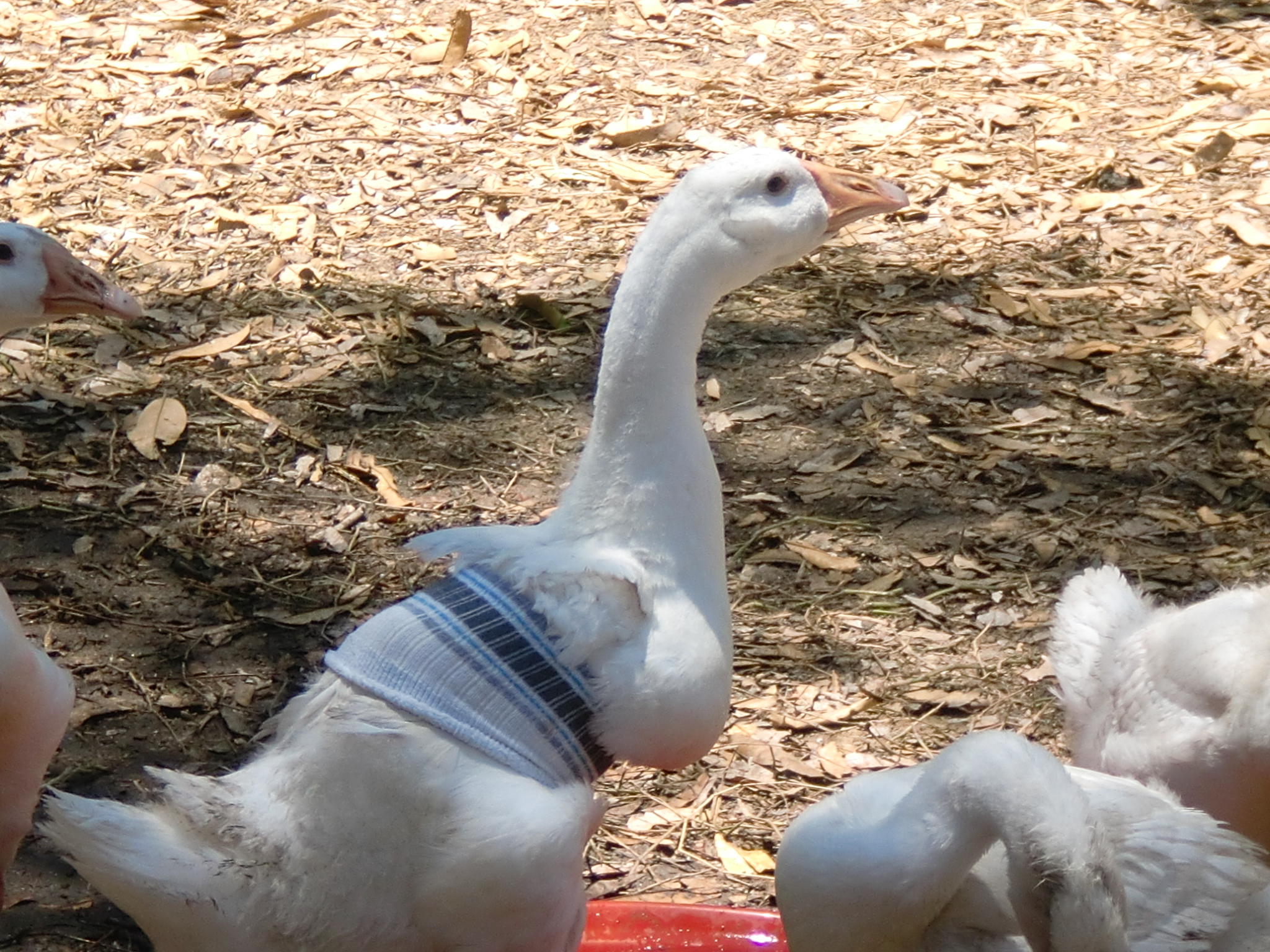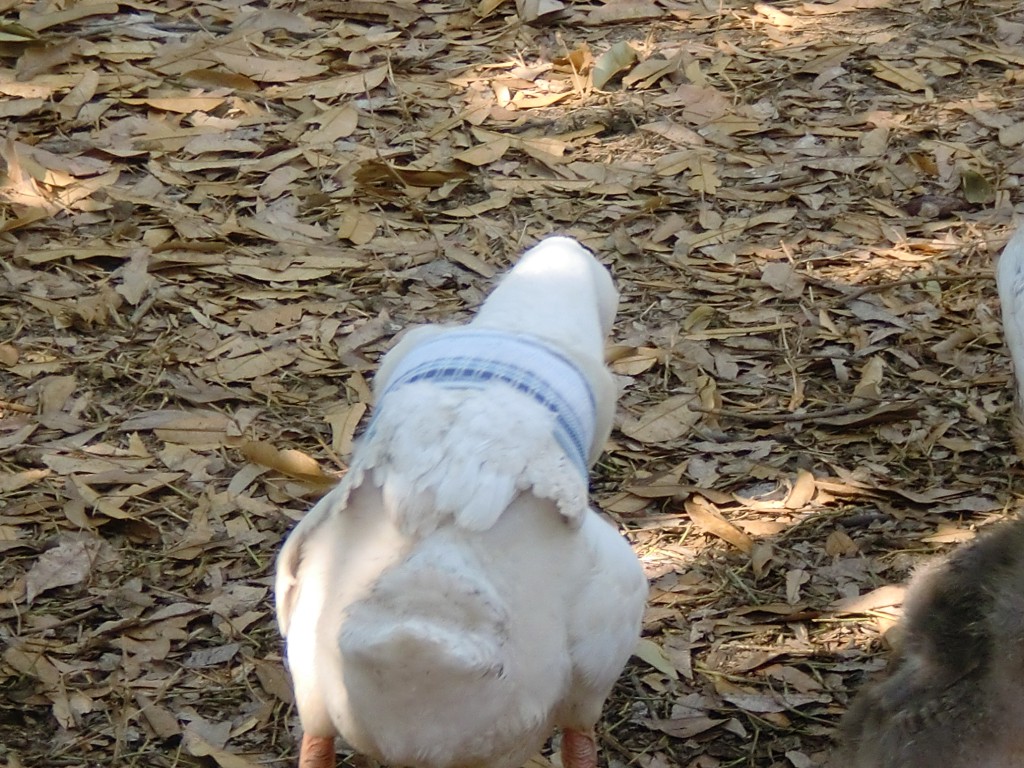
Angel Wing
Angel wing is a condition observed in swans and geese but can occur in ducks and other waterfowl. In young birds, the last joint of the wing is twisted and points out, away from the body not allowing it to lie flat. If left untreated, the condition is permanent and results in a bird that cannot fly. Other than the unsightly appearance, the bird is otherwise normal and healthy.
Causes
I have researched this topic pretty thoroughly. It appears the verdict is split between nutrition and genetics. The researchers who blame diet observe that the condition does not occur in nature; only in flocks that are fed by man, typically a high calorie, high protein, commercial grade feed. I believe the cause – or at least the propensity for angel wing is genetic.
- Mostly prevalent in males
- Affects both wings or left wing only
- Pairs carrying the defect can produce multiple generations if allowed to breed
Note: Of course the condition is not observed in nature – the condition occurs in young birds and destroys their ability to fly. It cannot be observed because the young bird quickly become a slow meal to a hungry predator. Also, the bird’s early death purges the defect from the gene pool before there is any chance of passing it along – duh.
Treatment
Treatment is quite straightforward. Caught at an early stage (just a few weeks) it is a simple matter to “fold” the wing back into the proper position and bind it in place.
Waterproof surgical tape is recommended, however, I cut the top off an athletic sock that had lost its elasticity – it worked just fine.
This can take a few days to a few weeks. Do Not Cut or Trim the Wing! The developing quills are filled with blood and the bird will bleed to death!
The research material I found unanimously recommended that the feed be cut back at this point to allow the wing growth to “catch up with itself”. That did not make sense to me. I decided to continue the normal feed rationing as I wanted the wing to continue to grow rapidly now that it was in the proper position. Believe me when I tell you the bird does not enjoy being bound up like this. I wanted to minimize his discomfort.
After 3 days, I removed the binding to check progress and let blood freely circulate in the wings again. I was prepared to re-apply the binding; however the wings were dramatically improved. The right wing was almost perfect. The left wing still drooped a bit, but was oriented properly and not twisted. Over the next few days, his muscles strengthened and he learned to tuck both his wings in quite nicely.
Recommendations
If your flock is small or your birds are backyard pets, by all means treat angel wing at the earliest opportunity – preferably when the gosling is only weeks old and just beginning to show signs. Do not wait! It will not go away by itself! If your flock is larger and/or you plan to breed birds, you should consider harvesting affected males at twelve to twenty weeks. Personally, I do not treat the birds anymore. Affected males are raised along with the rest of each batch and become the main course at family gatherings.
Please provide feedback. Comments and questions are not only welcome, they are encouraged.
Ya’ all come again real soon.






What a comprehensive and interesting write up about Angel Wings!! Love the photos!
Thanks very much. Our flock of geese and ducks increases daily. Expect more information as we learn and grow.